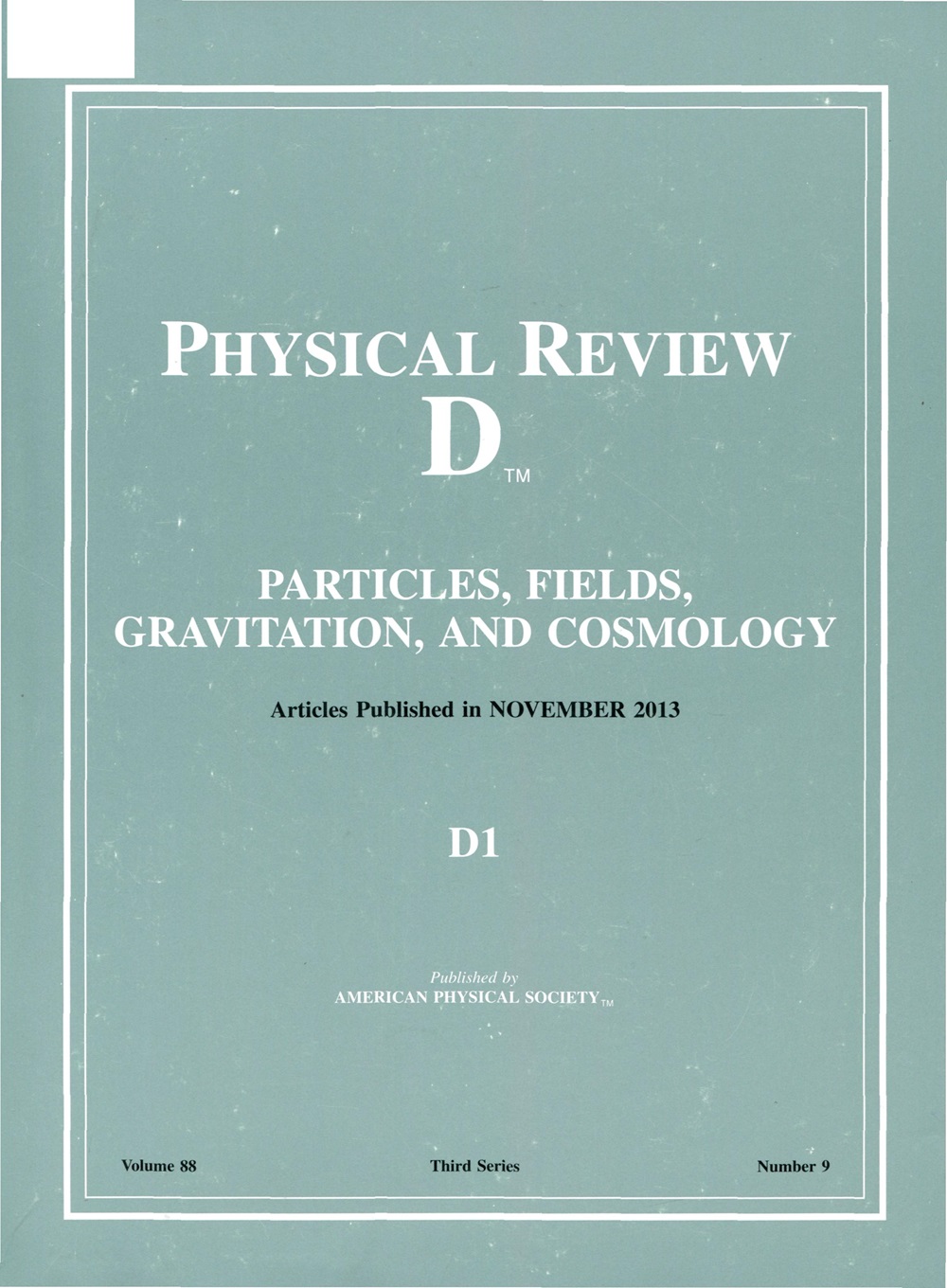Critical dynamics of model H within the real-time FRG approach
IF 5
2区 物理与天体物理
Q1 Physics and Astronomy
引用次数: 0
Abstract
The critical dynamics of model H with a conserved order parameter coupled to a transverse momentum density which describes the gas-liquid or binary-fluid transitions is investigated within the functional renormalization group approach formulated on the closed time path. According to the dynamic scaling analysis, model实时FRG方法中H模型的临界动力学
在封闭时间路径上建立的泛函重整化群方法中,研究了具有守恒阶参数和描述气液或二元流体过渡的横向动量密度耦合的H模型的临界动力学。根据动态标度分析,模型H与量子色动力学(QCD)临界端点在临界区域内属于同一动态普适类。通过计算两点相关函数,得到了由模式耦合引起的输运系数λ¯和剪切粘度η¯的高阶修正。导出了非耗散相互作用的无量纲耦合常数的流动方程,以寻找系统的不动点解。估计了输运系数的临界指数与剪切粘度的临界指数之间的标度关系。最后,得到了动态临界指数z作为空间维数d的函数。发表于美国物理学会2025
本文章由计算机程序翻译,如有差异,请以英文原文为准。
求助全文
约1分钟内获得全文
求助全文
来源期刊

Physical Review D
物理-天文与天体物理
CiteScore
9.20
自引率
36.00%
发文量
0
审稿时长
2 months
期刊介绍:
Physical Review D (PRD) is a leading journal in elementary particle physics, field theory, gravitation, and cosmology and is one of the top-cited journals in high-energy physics.
PRD covers experimental and theoretical results in all aspects of particle physics, field theory, gravitation and cosmology, including:
Particle physics experiments,
Electroweak interactions,
Strong interactions,
Lattice field theories, lattice QCD,
Beyond the standard model physics,
Phenomenological aspects of field theory, general methods,
Gravity, cosmology, cosmic rays,
Astrophysics and astroparticle physics,
General relativity,
Formal aspects of field theory, field theory in curved space,
String theory, quantum gravity, gauge/gravity duality.
 求助内容:
求助内容: 应助结果提醒方式:
应助结果提醒方式:


